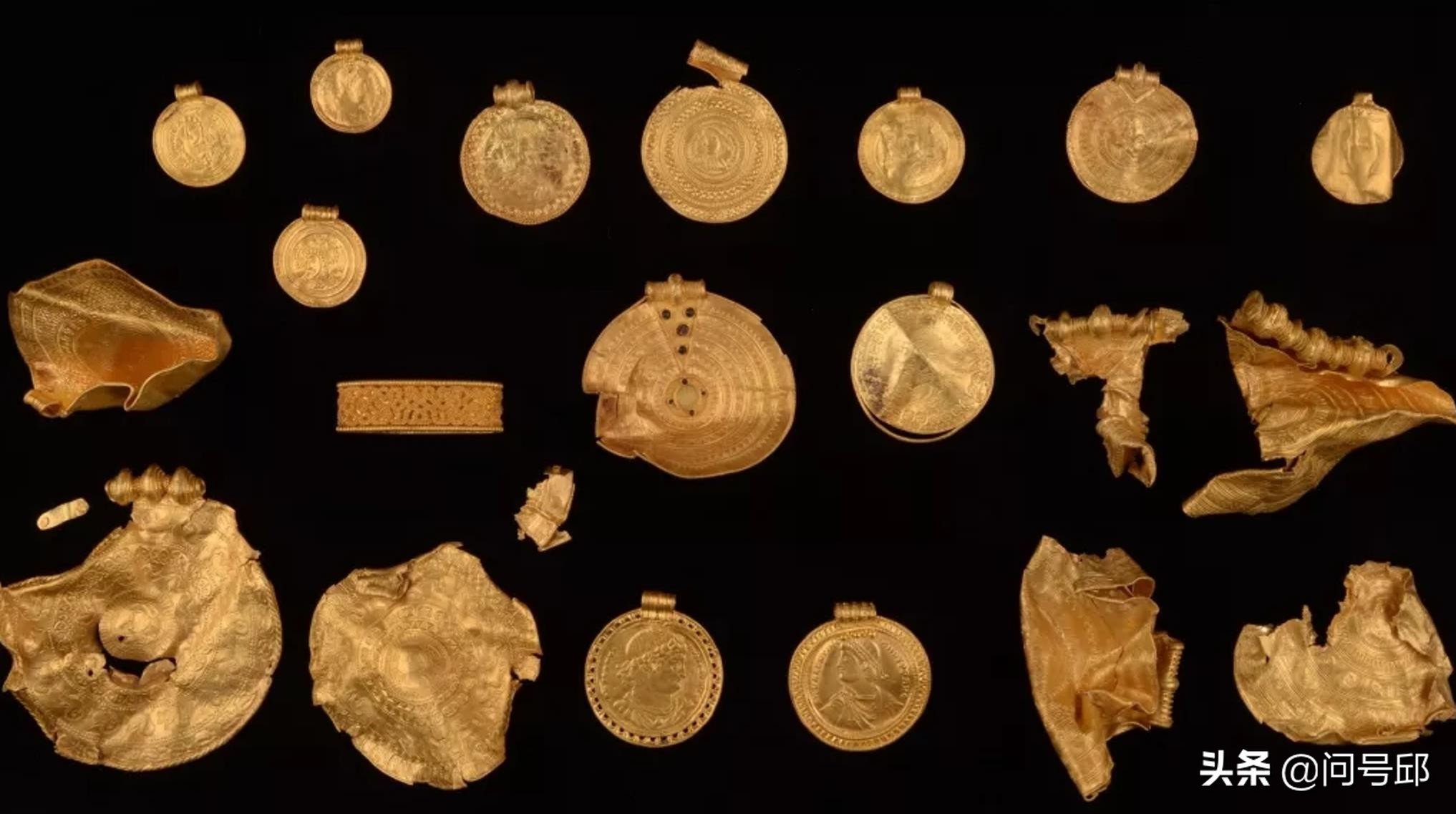
As shown in the picture above: There are many elaborate gold artifacts in the treasures of the 6th century.
An amateur treasure hunter holding a metal detector discovers an astonishing gold treasure buried by a 6th-century Iron Age chief in what is now Denmark. The collection includes lavish jewelry, Roman coins and an ornament that may depict Norwegian mythology.
<h1 class="pgc-h-arrow-right" data-track="25" > where the treasure was buried</h1>
As shown in the image above: a piece of gold jewelry in storage.
Treasure hunter Ole Ginnerup Schytz discovered an Iron Age treasure on a plot of land in the town of Vindelev that belonged to a former classmate of his, hence the name "Vindelev Treasure".
After hours of surveying the area with his newly purchased metal detector, Hitz heard beeps that might have treasure. In a statement released on September 9, representatives of the Vejle Museum said it was one of the largest, richest and most beautiful treasures of gold in Danish history.
As shown in the image above: a thin piece of gold coin in storage.
This 1500-year-old treasure contains nearly 1 kilogram of gold, including a medallion known as a thin gold coin. Archaeologists from the Vejle Museum and the National Museum of Denmark have excavated the site and found valuable gold buried in a long house, which may indicate that the town of Vindelev was a powerful village in the Iron Age.
Archaeologists speculate that the treasures may have been buried by a person of high social status at the time. Mads Ravn, head of research at the Vejle Museum, said: "Only the social elite can collect such treasures. ”
<h1 class="pgc-h-arrow-right" data-track="41" > gold coin</h1>
As shown in the figure above: a piece of gold in storage.
The town of Vindelev is 8 km from the village of Yelling, a cultural hotspot where the first monarchs ruled when the country was unified or reunified in the 10th century. Lavin added: "Until now, until the emergence of the Kingdom of Denmark in the following centuries, there was no indication that there were previously unknown warlords or chiefs living here. ”
However, it seems that the chiefs who owned these treasures managed to accumulate wealth and attracted skilled craftsmen to make them.
As shown in the image above: faces with thin gold coins, horses, and Runes.
Archaeologists point out that among the treasures are some flakes of gold coins, as well as Roman coins minted into jewelry using a unique technique that has never been seen before. Some of the gold coin motifs and runes may be related to the rulers of the time, but others may be related to Norwegian mythology. For example, a thin gold coin shows a man in braids, surrounded by images of a horse, a bird, and another man, as well as a neoni (ancient mysterious alphabet), which can be translated as "the high one."
It is possible that the "high-ranking one" refers to the ruler, or even the chief who buried the treasure. But archaeologists say that, according to later Norwegian mythology, the word is associated with the god Odin.
As shown in the image above: A researcher examines a plate-sized thin slice of gold coin.
The treasures also contain some older Roman Coins, including a heavy gold coin inscribed with the head of Constantine the Great (272–337 AD). Constantine the Great was the first Roman emperor to embrace Christianity.
<h1 class="pgc-h-arrow-right" data-track="20" > volcanic disaster</h1>
As shown in the picture above: Curators carefully place their stored items in boxes.
The chief probably buried these treasures after a major volcanic eruption that shook Europe in 536 AD, when sulfate and ash clouds from eruptions entered the atmosphere, blocking sunlight and lowering temperatures in the northern hemisphere. According to a 2015 study, the location of the volcano is unclear, but its eruption could have contributed to subsequent famines, epidemics and socioeconomic decline.
In the years after the eruption, many people in Scandinavia buried treasure, either to protect them from enemy plunder or to appease the gods, according to the Vejle Museum. Museum representatives say that, in fact, more than 40 kilograms of Iron Age buried gold have been found in Denmark.
As shown in the picture above: various gold treasures in storage.
The Vindelev treasure will be on display at the Vejle Museum's Viking exhibition, which will open on February 3, 2022. The exhibition is held in collaboration with the Moesgaard Museum in Denmark.